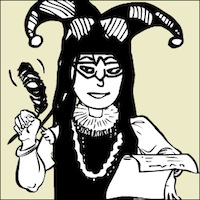Für Elise - A Classical Music Mystery

You recognize it immediately when you hear the first nine notes, even if you never knew its title.
Its official title is “Bagetelle No. 25 in A minor,” but that’s not nearly as romantic as “Für Elise” (“For Elise”). Composed by Ludwig van Beethoven on April 27, 1810, it’s one of the world’s most popular pieces of classical music. It also raises the question: Who is Elise? The answer is still a mystery.
Beethoven never even published the composition. Instead, what connects him with it is an unpublished sketch that you can view at the Beethoven-Haus Bonn Digital Archives. A sketch in music is what you’d expect it to be: ideas that the composer might later develop into an opus. Beethoven left thousands of pages of annotated sheet music at his death, and scholars have not resisted trying to piece together some of the fragments scribbled on those sheets.
There is even a later version of “Für Elise” because Beethoven revised the first sketch twelve years later. However, the revised version is not the one we know.
So, how do we know “Für Elise” was composed on this day 205 years ago? We don’t, really. The first sketch is undated, but jotted on the same document are ideas for a different piece, which Beethoven did date to 1810. Thus the “Für Elise” sketch must also have been written that year.
However, the score for the tune we recognize today was published by Beethoven scholar Ludwig Nohl in 1867, long after the first sketch was written and decades after the composer’s death. What happened in those 57 years? We don’t know, but Nohl claimed to have seen an original manuscript written and signed by the composer. This document apparently disappeared, lost forever to history, after Nohl copied it for his publication.
Italian musicologist Luca Chiantore doubts this. In 2009 Chiantore suggested that Nohl never saw such a manuscript, and that he must have transcribed “Für Elise” by piecing together the fragments in the first sketch and filling in the gaps. Luckily, the score Nohl published is much the same as Beethoven’s first sketch – it’s basically just a polished version of that rough draft. Therefore the tune we know today was definitely composed by the maestro, even if he didn’t give it the familiar title.
It was Nohl who gave the piece its title. According to him, the original score also bore a dedication: “Für Elise am 27. April zur Erinnerung von L. von Bthvn” (“For Elise on April 27 in memory of L. von Beethoven”). Yet, after more than a hundred years, we still don’t know who Elise is.
Some scholars believed that Nohl had simply misread the dedication. They said it could have read, “Für Therese,” since the autograph score he saw was found among the papers of Therese Malfatti, a Viennese musician. It was Therese whom the German composer hoped to marry in 1810. Unfortunately, she declined, and in a letter from April or May of that year Beethoven wrote: “Now fare you well, respected Therese. I wish you all the good and beautiful things in this life. Bear me in memory.”
In 2011, the theory that Elise was Elisabeth Röckel, a German soprano, was refuted. Although Elisabeth was a lifelong friend of Beethoven who visited him at his deathbed and even saved a lock of his hair, the autograph score was not found among her possessions. Therefore it’s doubtful that she was the Elise of his bagatelle. Austrian musicologist Michael Lorenz believes the famous dedication was not written by Beethoven at all but by Josef Rudolf Schachner, a composer who inherited the score from Therese Malfatti. Upon inheriting the document, Schachner could have given it as a gift to either his wife or his daughter. Both were named Elise.
The most recent Elise candidate is Juliane Katharine Elisabet Barensfeld. As a child prodigy, Elise Barensfeld performed in touring concerts in 1809 with a friend of Beethoven’s, and they lived in a house across from Therese’s in Vienna. Therese could have given Elise piano lessons, and Beethoven could have composed the bagatelle for Elise as a favor to Therese. Thus the theory rests for now.
It’s probably this mystery that remains interesting about “Für Elise” as the tune itself – the first part, anyway – becomes more and more of a cliché. Still, many a pianist must owe part of their success to the piece, which gives fingers and feet a good workout. Now, when you next hear or play it, you’ll probably find yourself wondering about the elusive Elise.
Its official title is “Bagetelle No. 25 in A minor,” but that’s not nearly as romantic as “Für Elise” (“For Elise”). Composed by Ludwig van Beethoven on April 27, 1810, it’s one of the world’s most popular pieces of classical music. It also raises the question: Who is Elise? The answer is still a mystery.
Beethoven never even published the composition. Instead, what connects him with it is an unpublished sketch that you can view at the Beethoven-Haus Bonn Digital Archives. A sketch in music is what you’d expect it to be: ideas that the composer might later develop into an opus. Beethoven left thousands of pages of annotated sheet music at his death, and scholars have not resisted trying to piece together some of the fragments scribbled on those sheets.
There is even a later version of “Für Elise” because Beethoven revised the first sketch twelve years later. However, the revised version is not the one we know.
So, how do we know “Für Elise” was composed on this day 205 years ago? We don’t, really. The first sketch is undated, but jotted on the same document are ideas for a different piece, which Beethoven did date to 1810. Thus the “Für Elise” sketch must also have been written that year.
However, the score for the tune we recognize today was published by Beethoven scholar Ludwig Nohl in 1867, long after the first sketch was written and decades after the composer’s death. What happened in those 57 years? We don’t know, but Nohl claimed to have seen an original manuscript written and signed by the composer. This document apparently disappeared, lost forever to history, after Nohl copied it for his publication.
Italian musicologist Luca Chiantore doubts this. In 2009 Chiantore suggested that Nohl never saw such a manuscript, and that he must have transcribed “Für Elise” by piecing together the fragments in the first sketch and filling in the gaps. Luckily, the score Nohl published is much the same as Beethoven’s first sketch – it’s basically just a polished version of that rough draft. Therefore the tune we know today was definitely composed by the maestro, even if he didn’t give it the familiar title.
It was Nohl who gave the piece its title. According to him, the original score also bore a dedication: “Für Elise am 27. April zur Erinnerung von L. von Bthvn” (“For Elise on April 27 in memory of L. von Beethoven”). Yet, after more than a hundred years, we still don’t know who Elise is.
Some scholars believed that Nohl had simply misread the dedication. They said it could have read, “Für Therese,” since the autograph score he saw was found among the papers of Therese Malfatti, a Viennese musician. It was Therese whom the German composer hoped to marry in 1810. Unfortunately, she declined, and in a letter from April or May of that year Beethoven wrote: “Now fare you well, respected Therese. I wish you all the good and beautiful things in this life. Bear me in memory.”
In 2011, the theory that Elise was Elisabeth Röckel, a German soprano, was refuted. Although Elisabeth was a lifelong friend of Beethoven who visited him at his deathbed and even saved a lock of his hair, the autograph score was not found among her possessions. Therefore it’s doubtful that she was the Elise of his bagatelle. Austrian musicologist Michael Lorenz believes the famous dedication was not written by Beethoven at all but by Josef Rudolf Schachner, a composer who inherited the score from Therese Malfatti. Upon inheriting the document, Schachner could have given it as a gift to either his wife or his daughter. Both were named Elise.
The most recent Elise candidate is Juliane Katharine Elisabet Barensfeld. As a child prodigy, Elise Barensfeld performed in touring concerts in 1809 with a friend of Beethoven’s, and they lived in a house across from Therese’s in Vienna. Therese could have given Elise piano lessons, and Beethoven could have composed the bagatelle for Elise as a favor to Therese. Thus the theory rests for now.
It’s probably this mystery that remains interesting about “Für Elise” as the tune itself – the first part, anyway – becomes more and more of a cliché. Still, many a pianist must owe part of their success to the piece, which gives fingers and feet a good workout. Now, when you next hear or play it, you’ll probably find yourself wondering about the elusive Elise.

Related Articles
Editor's Picks Articles
Top Ten Articles
Previous Features
Site Map
Content copyright © 2023 by Lane Graciano. All rights reserved.
This content was written by Lane Graciano. If you wish to use this content in any manner, you need written permission. Contact Lane Graciano for details.







